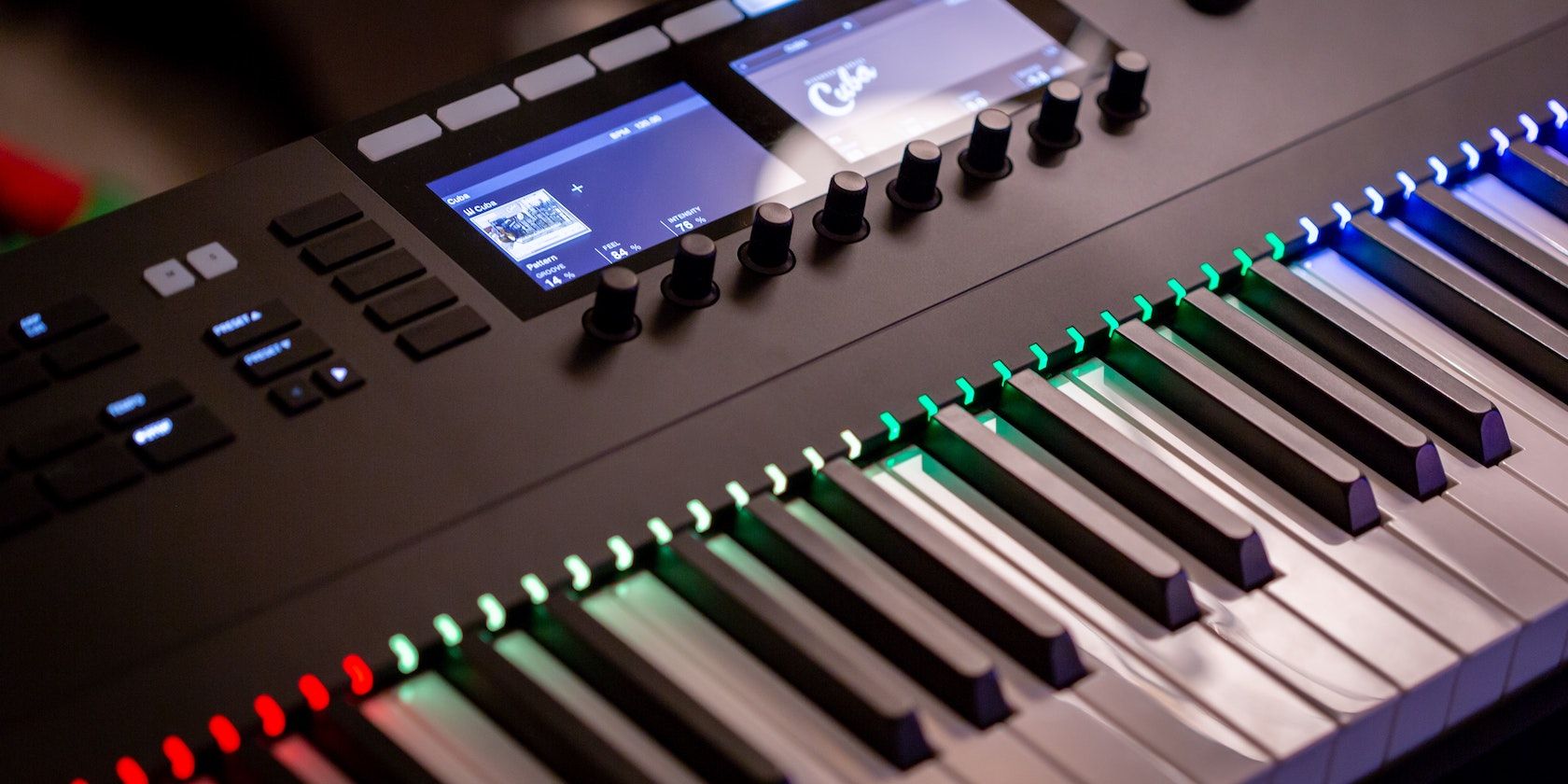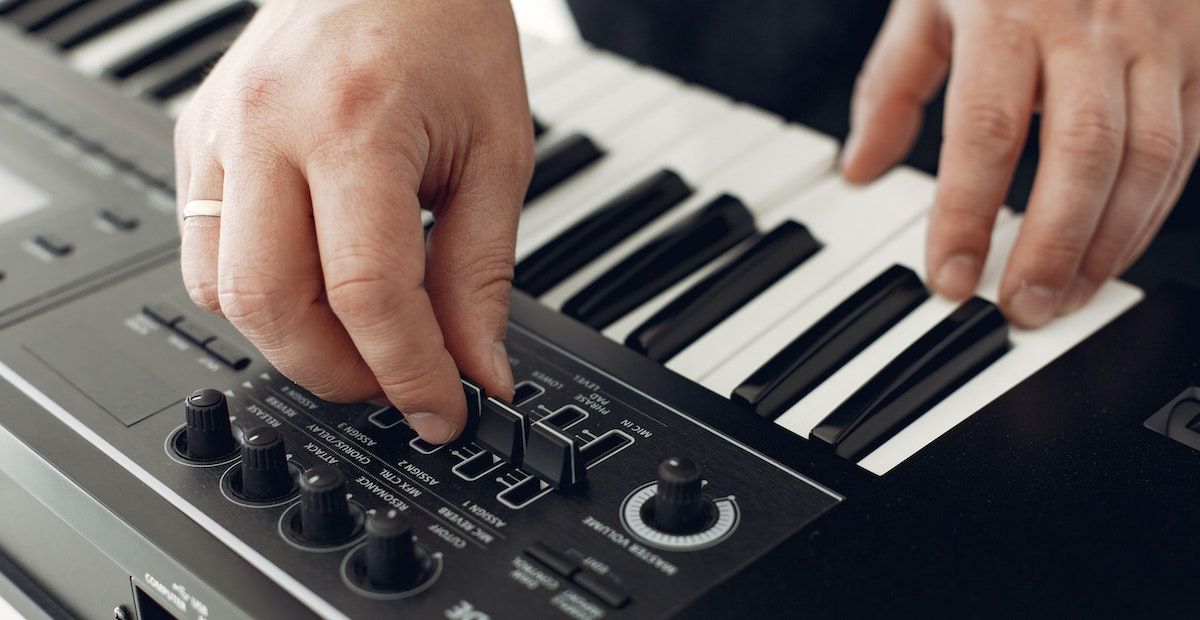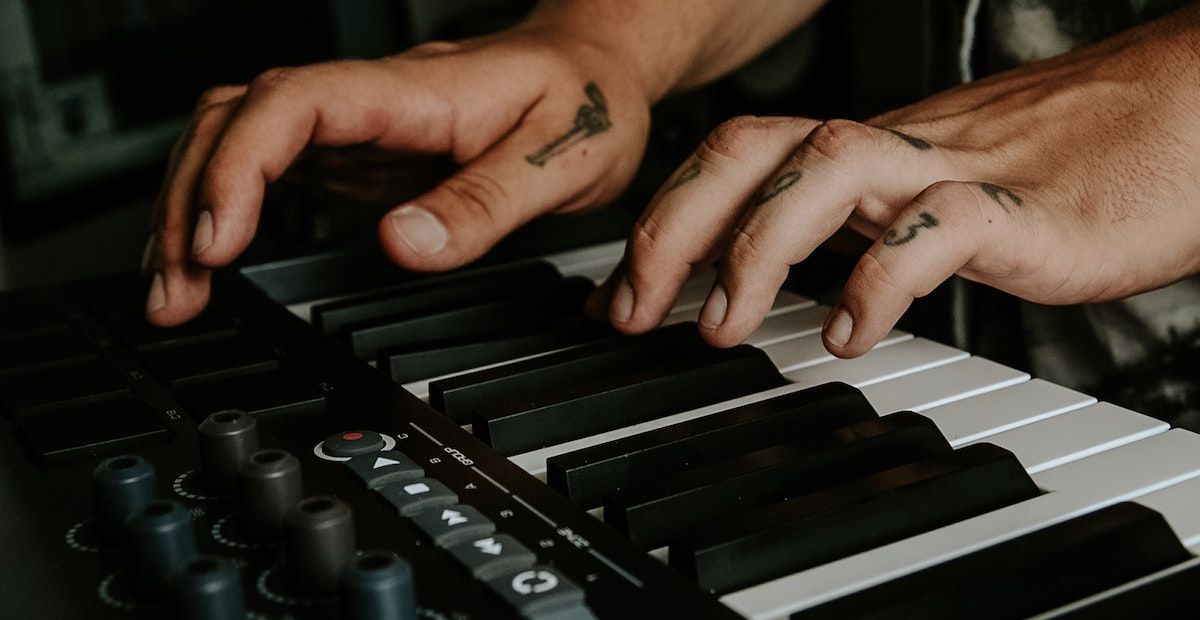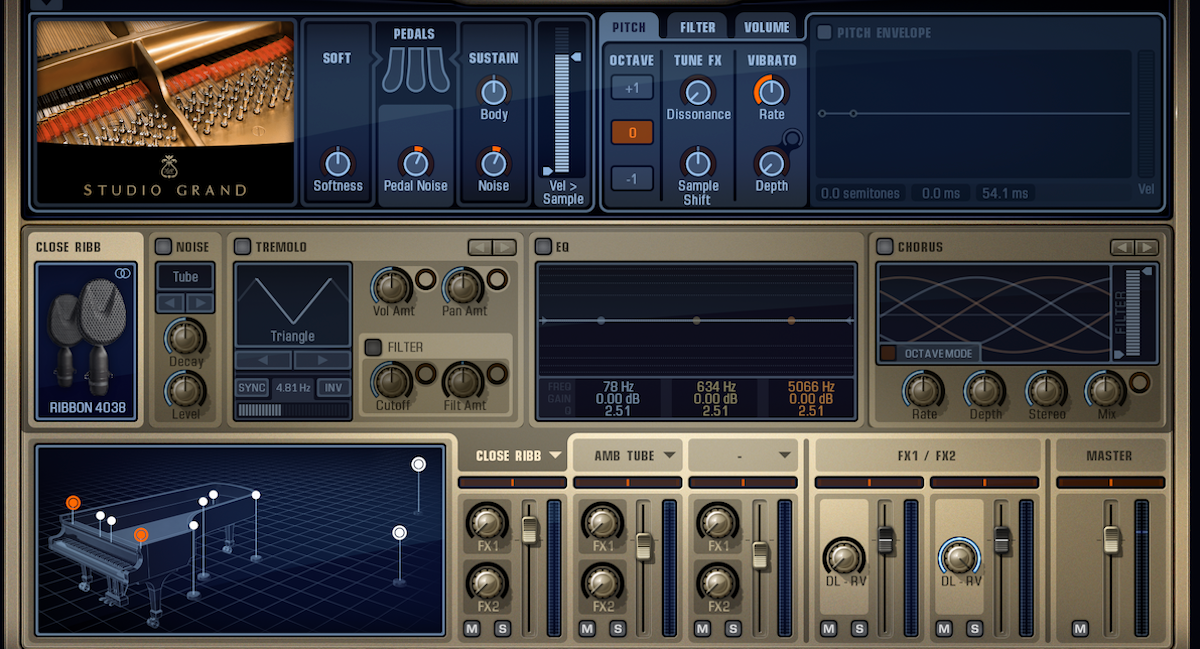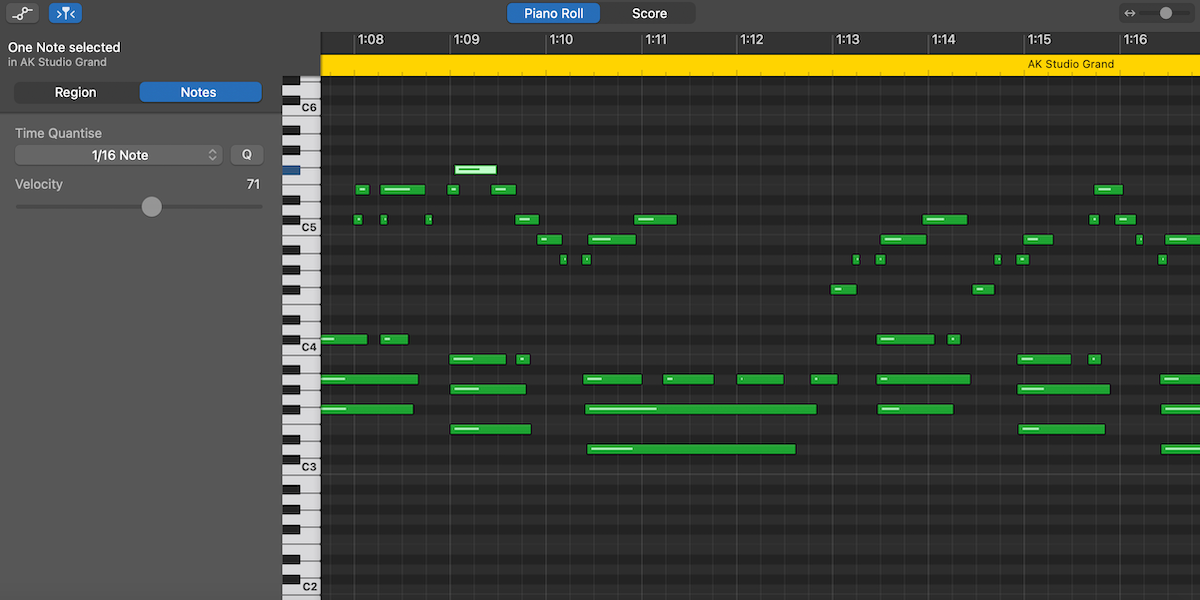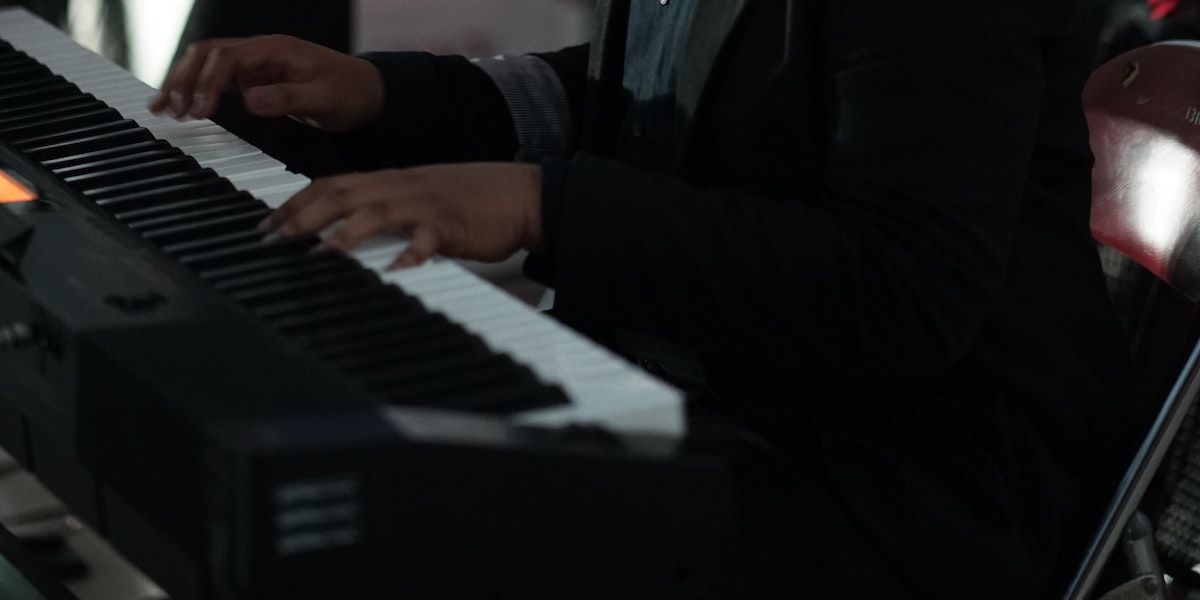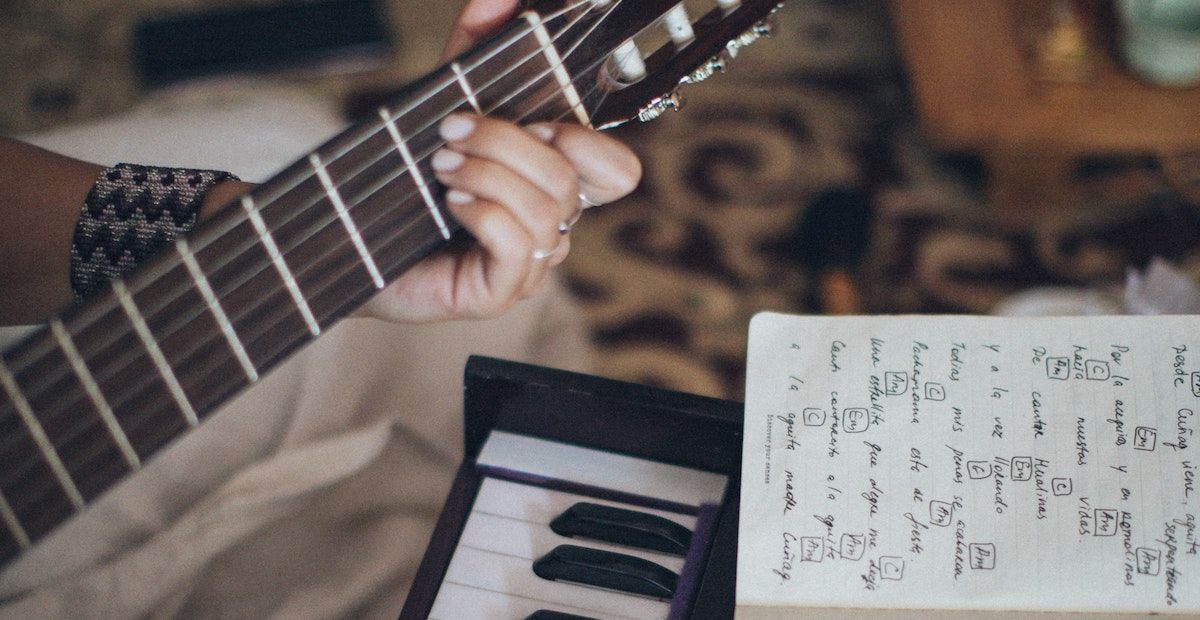Your keyboard is incredibly versatile, and comes with the ability to extend beyond live playing into music production. But when using it as a MIDI controller, you can explore different sounds with unlimited potential once you really get started.
But what is a MIDI controller, and why should you use your keyboard as one? Let's find out.
What Is a MIDI Controller?
MIDI stands for Musical Instrument Digital Interface. It's essentially a musical language that gets interpreted by computers using MIDI controllers, such as various keyboards and pads.
Confusingly, MIDI records everything except audio. Unlike microphones, MIDI controllers instead pick up on what you did to create a sound, and then translate that into a synthesized note.
When you input music via a MIDI connection, parameters like what key you press, the strength at which you press it, the duration of the note, if you're using a pedal, etc. will be identified. Your computer then translates all of this into a sound that fulfills these parameters by using virtual instruments that, nowadays, sound very authentic.
Though you can use your computer keyboard as a MIDI controller, this would be bad practice, as you won't be able to play naturally. You'll find that inputting and adjusting MIDI notes on a musical keyboard—as opposed to a QWERTY one—is so much more natural and intuitive.
Now, let's dive into the reasons why you should use your keyboard as a MIDI controller.
1. It's Easy to Set Up
If you're unfamiliar with MIDI controllers, it might sound a bit intimidating to even connect your keyboard, let alone jump right into recording via a MIDI connection. In fact, it's never been easier to set up your keyboard as a MIDI controller.
Nowadays, you can connect a MIDI controller to your computer directly via a USB connection without any external devices. Most keyboards do have this option, and require a simple USB-B to USB-A/USB-C connection, depending on your computer's USB ports.
Even if your keyboard doesn't have a USB output, setting it up as a MIDI controller still isn't too hard. You'll just need a few extra things to get your MIDI connection up and running. You can find out more about this in our article that tells you how to record your keyboard on GarageBand.
2. VSTs
A VST (Virtual Studio Technology) is a software plugin used to generate sounds that you can record using a DAW (digital audio workstation), such as GarageBand or Audacity.
VSTs come in the form of full-fledged virtual instruments or as effects. You can use the former to create a melody, for instance, and then the latter to tweak it. VST effects can also be used on non-MIDI recordings, so you can integrate similar effects on both MIDI and non-MIDI inputs.
As there are near-endless amounts of VSTs, each with its own unique features, you'll soon find it a joy to create nuanced sounds of your preferred instrument, as well as experiment with new ones.
Using various VSTs with your keyboard opens up a wide range of sounds for you to try, as well as effects you can build upon. And, what's more—there are loads of great free VST plugins for you to use.
3. You Can Easily Edit Mistakes
Do you hate it when you've got a near-perfect recording, but you've accidentally played one wrong note? Or perhaps you held a note down a little longer than it needed to be, or you played it too loud.
If you're recording your music using your keyboard as a MIDI controller, then these mistakes can easily be fixed. Better yet, there's no need to re-record your entire piece. Because MIDI recognizes the parameters at which you played a sound and then generates a sound based on that, you can adjust those parameters in your DAW.
There's a wide range of customization when it comes to editing a MIDI track, such as changing pitch, velocity, note length, and EQ, without making your music sound warped or "fake."
4. Better Sound Quality vs. Microphone Recording
If you've ever recorded your keyboard using a microphone, then you'll know that this usually doesn't sound that good. With this method, you're not picking up the actual vibrations produced—you're just getting replications of the sound. And, unfortunately, you can't really remedy this issue by buying a better microphone.
Recording your keyboard via MIDI changes this by using the aforementioned VSTs. Though the sound is synthesized, it's being produced inside your DAW, as opposed to being recorded via a microphone.
There are plenty of quality VSTs for you to try that provide genuine-sounding live instruments. You'll definitely get a better result using a piano VST than by recording your keyboard's speakers with a microphone.
5. Virtually Zero Audio Leaking
If you're recording multiple live instruments at once using microphones, there's likely going to be a leak that causes your microphones to pick up sounds from the other instruments. You can mitigate this by recording each instrument separately in a soundproof room, but most people usually won't have multiple soundproof rooms in a home studio.
This is a part of the live recording process that we have to live with. However, if you're using your keyboard as a MIDI controller, you can record live instruments and keys at the same time with minimal crossover.
To clarify, this "minimal crossover" we're talking about is the sound of your fingers hitting the keys, which could potentially get picked up on your microphone track. That's it—nothing will leak into your MIDI track from the other instrument(s).
If you're recording vocals and keys, this is a blessing, as getting the right levels on one track invariably sends the other off-balance when recording both with microphones.
Incorporate Your New MIDI Controller Into Upcoming Projects
The more you utilize your keyboard as a MIDI controller, the more benefits you'll find. What's great is that you can incorporate your new MIDI controller into a wide range of projects.
MIDI is malleable and versatile. So, whether you're starting a new solo or group project or adding to an existing piece, your new MIDI controller is there to enhance and improve your sound.

